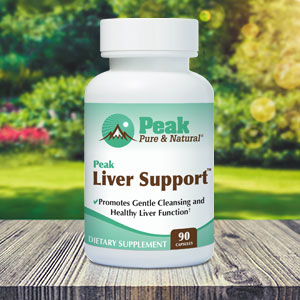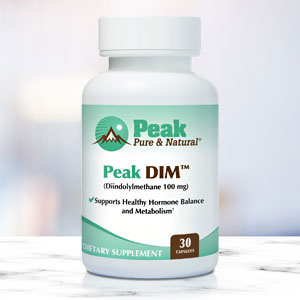Get Easy Health Digest™ in your inbox and don’t miss a thing when you subscribe today. Plus, get the free bonus report, Mother Nature’s Tips, Tricks and Remedies for Cholesterol, Blood Pressure & Blood Sugar as my way of saying welcome to the community!
Tiny plastic particles can reach the brain in just 2 hours

I’m about to present you with a good argument for swearing off Styrofoam. Forever.
Yes, it’s convenient, and yes, it’s good at keeping your drinks cold or hot. And if you want to take your dinner home from the steakhouse, it’s hard to escape.
But the price you’re paying — the price we’re all paying — is becoming more and more clear, to the point where it’s hard to deny that we’re better off without it.
Microplastics and nanoplastics
Microplastics are plastic particles that are between 0.001 and 5 millimeters in size. Many are still visible to the naked eye.
Nanoplastics, on the other hand, are smaller than 0.001 millimeters in size and are invisible to the naked eye.
Both are hazardous to your health, and you’re being exposed to both … more than you think.
Eating fish and seafood that have consumed both types of particles is the most common way we ingest them without even knowing it.
But there are other sources, including things we consider good for us, like bottled water and vegetables.
Besides being toxic themselves, plastic particles pose a problem for another reason.
Other environmental poisons “hitch a ride” on microplastic particles that we ingest, and so get a lot closer to the walls of our cells than they normally would. From there, they can easily enter our bloodstream, and in a much more concentrated form.
Styrofoam: one of the worst offenders
Polystyrene, better known as styrofoam™, is one of the most treacherous nanoplastics of all.
Polystyrene releases the chemical styrene, which The Department of Health and Human Services’s National Toxicology Program has listed as “reasonably anticipated to be a human carcinogen.”
The Environmental Protection Agency (EPA) says that short-term exposure to styrene can affect the nervous system, causing depression, weakness, fatigue, and nausea. Long-term exposure can cause liver and nerve tissue damage, as well as cancer.
Styrofoam nanoparticles reach the brain in just two hours
An Austrian and a Hungarian scientist have led a group of researchers in exploring just how polystyrene nanoparticles are able to cross the protective blood-brain barrier and enter the bloodstream.
They administered nanoparticles to mice by mouth, and something scary happened.
Despite having a protective barrier similar to humans, the nanoparticles reached the mouse brain in just two hours!
The researchers believe that the nature of the surface structure of each particle is key in letting it pass through the blood-brain barrier.
More research is needed, but other things are already known for certain. Both micro- and nanoparticles in the gastrointestinal tract have already been linked with localized inflammatory and autoimmune reactions, as well as the development of cancer.
“In the brain, plastic particles could increase the risk of inflammation, neurological disorders or even neurodegenerative diseases such as Alzheimer’s or Parkinson’s,” says lead author Lukas Kenner of the Medical University of Vienna.
How to cut down on plastic in your brain and body
The pervasiveness of microplastics is something scientists have really only started to understand in the last several years. But we do know that microplastics and other toxins have been shown in many studies to pose a danger to human health, particularly when it comes to our hormones.
“To minimize the potential harm of micro- and nanoplastic particles to humans and the environment, it is crucial to limit exposure and restrict their use while further research is carried out into the effects of MNPs,” says Prof. Kenner.
While it might seem impossible to steer clear of these particles, you can minimize your exposure.
Buy organic. Even better, know the source. If you can gain access to local farmers and fishermen, you stand a better chance of finding cleaner food.
Drink tap water – and use a filter. According to one study, anyone who drinks the recommended 1.5-2 liters of water per day from plastic bottles will end up ingesting around 90,000 plastic particles a year in the process.
However, drinking tap water instead can — depending on the geographical location — help reduce this figure to 40,000. And using a water filter in your home will further reduce the particles you drink.
Basically, the more you can eliminate plastic from your world, especially your food, the better. Use glass storage containers instead of plastic, and avoid plastic wrappers as much as possible, or transfer your food to glass as soon as you get it home.
And of course, you should be doing things to support your liver as it removes toxins from your body, including detoxifying your body with the right foods and supplements.
Another reason to exercise regularly: Endocrine-disrupting chemicals like BPA have been found in sweat, which means your body may release them this way.
Editor’s note: Did you know that when you take your body from acid to alkaline you can boost your energy, lose weight, soothe digestion, avoid illness and achieve wellness? Click here to discover The Alkaline Secret to Ultimate Vitality and revive your life today!
Sources:
Tiny plastic particles also find their way into the brain — Eureka Alert
Micro- and Nanoplastics Breach the Blood–Brain Barrier (BBB): Biomolecular Corona’s Role Revealed — Nanomaterials
The perils of polystyrene and why it should be banned — World Centric
Public health statement on styrene — cdc.gov














